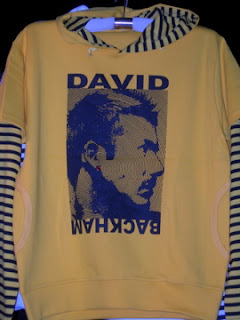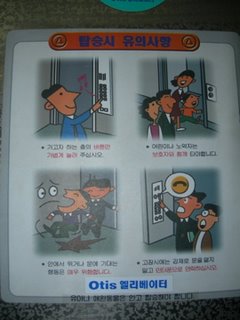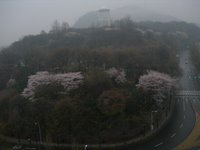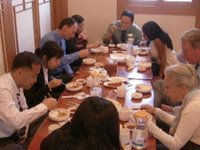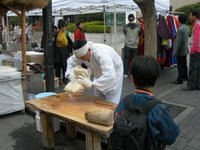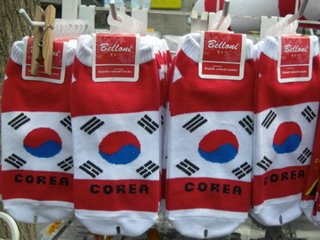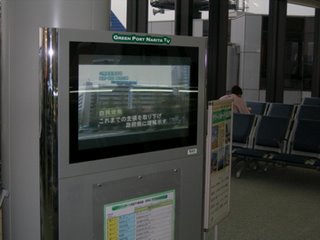The Korea Tims published a story about the USS Pueblo today. Three days after your blogger told you about it.
By Lee Jin-woo
Staff Reporter
North Korea expressed its willingness to hand over a U.S. spy ship, the U.S.S Pueblo, captured by the North’s navy in the late 1960s, on the visit of a U.S. governor to Pyongyang last week, diplomatic sources in Seoul said Sunday.
It was belatedly known that the North hinted at the possible return of the captured U.S. spy ship, which has been exhibited as a war trophy at a North Korean port for three decades, to Gov. Bill Richardson of New Mexico and his delegation, according to the Yonhap News Agency.
The delegation, which also included Anthony Principi, a former U.S. secretary for veteran affairs, and Victor Cha, a White House advisor on inter-Korean affairs, was invited to see the insides of the 906-ton ship, which has been displayed near a river at the North’s capital since 1999.
Last Wednesday, Gov. Richardson crossed the Demilitarized Zone (DMZ) to Seoul with the remains of six U.S. soldiers killed during the 1950-53 Korean War after wrapping up his four-day trip to the reclusive North.
The Stalinist state, however, did not disclose any specific plan on when and how they would return the ship.
``It remains to be seen whether the North has a sincere attitude about returning the symbol of Cold War confrontation between Pyongyang and Washington,’’ an unnamed diplomatic source was quoted as saying by Yonhap.
If the U.S. takes concrete steps to normalize relations with North Korea, the Pyongyang regime may actually give back the ship, said the diplomatic source.
The North has disclosed its intention to return the ship several times.
After a 2005 visit to Pyongyang, former U.S. Ambassador to South Korea Donald Gregg quoted North Korean officials as saying that they had no need to keep the ship if a top-level American official makes a trip to the North, a goodwill gesture toward normalizing relations between the two countries.
Aides to former Prime Minister Lee Hae-chan said Lee demanded that North Korea send back the ship to the U.S. during his four-day trip to Pyongyang last month.
However, as no reporter was allowed to accompany him on the trip, details of the discussions have not been revealed to the public.
The latest gesture comes amid active international efforts to denuclearize North Korea.
A Feb. 13 accord at the six-party talks calls for the normalization of diplomatic ties between Pyongyang and Washington, in addition to making the Korean Peninsula nuclear-free.
The U.S. ship was seized off North Korea’s coast on Jan. 23, 1968.
In the attack, one U.S. crewmember was killed and several others wounded. Eighty-two surviving sailors were held there for 11 months before they were released.
The North Koreans contended that the Pueblo had violated their territorial waters, a claim vigorously denied by the United States. The crewmembers were repatriated on Dec. 23, 1968.
The ship was retained by North Korea, though she is still the property of the U.S.
Navy, according to its Naval Historical Center

























